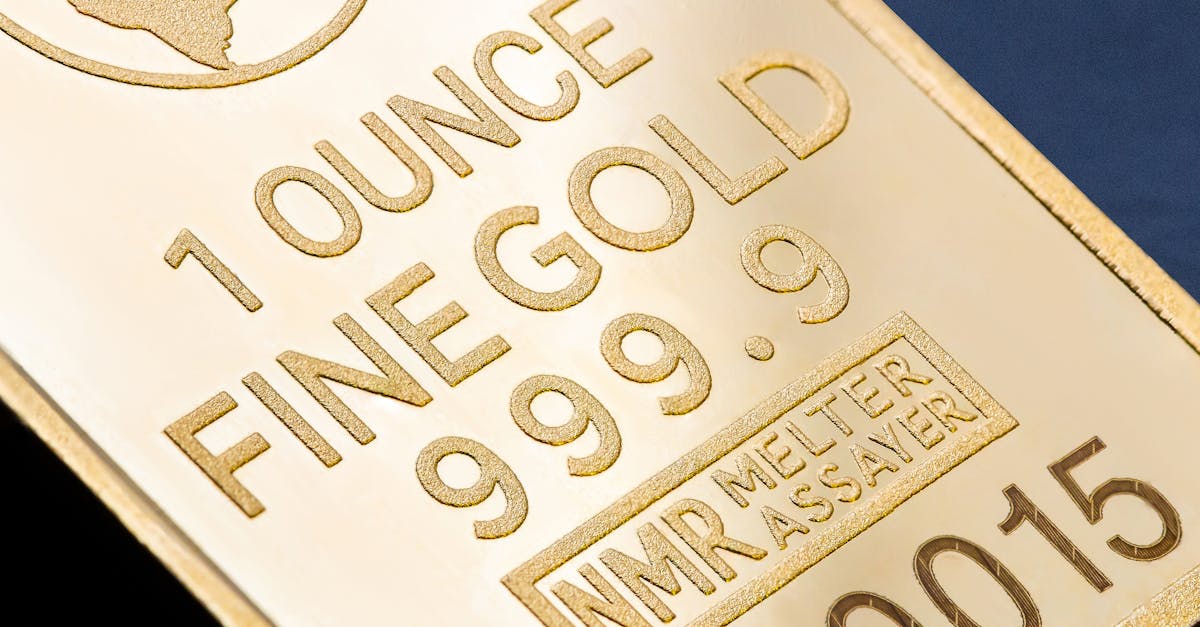The Gilded Shield: Gold’s Enduring Power in Inflationary Storms

Gold: A Timeless Shield Against the Perils of Inflation
In the labyrinthine world of finance, as inflation’s tempestuous winds threaten to erode the value of assets, savvy investors seek refuge in havens that can safeguard their wealth. Among these safe havens, gold stands tall as a time-honored fortress against the ravages of inflation. Throughout history, gold has time and again proven its mettle as a potent hedge against the insidious effects of rising prices.
From the bustling marketplaces of ancient civilizations to the sophisticated financial centers of today, gold has maintained its allure as a store of value, an emblem of stability in an ever-changing economic landscape. In an era marked by geopolitical turmoil, supply chain disruptions, and the seemingly relentless march of inflation, the significance of gold as an inflation hedge has only intensified.
Key Insights
- Gold has historically served as a reliable inflation hedge, maintaining or increasing its value during periods of rising prices.
- Gold’s unique properties, such as its tangible nature, scarcity, and global recognition, make it an attractive asset for investors seeking to protect their wealth from inflation.
- Factors like interest rates, economic growth, and geopolitical events can influence gold’s performance as an inflation hedge.
- Individual investors can incorporate gold into their portfolios to diversify and hedge against inflation, considering their risk tolerance and investment goals.
- Institutional investors are increasingly recognizing gold as a safe-haven asset and a valuable addition to their portfolios during economic uncertainty.
1. Understanding Inflation and its Impact on Assets
In the realm of personal finance, inflation is a sly and persistent foe, an invisible force that can erode the value of your hard-earned savings and investments over time. Simply put, inflation is a sustained increase in the general price level of goods and services in an economy. When inflation strikes, your dollar buys less than it used to, making it more challenging to maintain your standard of living.
Different asset classes respond to inflation in distinct ways. Traditional investments like stocks and bonds can be particularly vulnerable to inflationary pressures. Stock prices can suffer when inflation erodes corporate profits, while bonds, which offer fixed interest payments, can lose value as inflation outpaces the rate of return. Real estate, on the other hand, has historically been considered a decent hedge against inflation, as property values tend to rise in tandem with inflation. However, real estate is not without its own risks and can be illiquid, making it difficult to access funds quickly if needed.
Gold, with its unique properties of scarcity, durability, and global recognition, has emerged as a compelling alternative to traditional inflation hedges. Throughout history, gold has maintained its value even during periods of high inflation, providing investors with a safe haven for their wealth.
2. Gold’s Historical Role as an Inflation Hedge

Gold’s Historical Role as an Inflation Hedge
Throughout history, gold has repeatedly demonstrated its remarkable ability to maintain or increase its value during periods of inflation. Let’s delve into some key historical examples:
- The Great Inflation (1965-1982): During this period of high and persistent inflation in the United States, the price of gold skyrocketed, increasing by over 2,300%. While stocks and bonds suffered significant losses, gold served as a safe haven for investors, preserving their wealth from the ravages of inflation.
- The 1970s Oil Crisis: The oil crisis of the 1970s triggered a surge in inflation worldwide. Once again, gold proved its worth as an inflation hedge, outperforming other asset classes and providing investors with a much-needed hedge against rising prices.
- The 2008 Financial Crisis: The global financial crisis of 2008 led to a sharp decline in the value of stocks and bonds. Gold, on the other hand, held its ground, providing investors with stability during a turbulent economic period.
3. Advantages of Gold as an Inflation Hedge
Gold possesses several unique properties that make it an attractive hedge against inflation:
- Tangible Nature: Unlike fiat currencies, which are backed solely by the faith and credit of governments, gold is a physical asset with intrinsic value. This tangible nature provides investors with a sense of security and stability, especially during periods of economic uncertainty.
- Scarcity: Gold is a finite resource, with a limited global supply. This scarcity contributes to its value and makes it less susceptible to inflation than assets with an unlimited supply.
- Global Recognition: Gold is universally recognized and accepted as a valuable asset across cultures and borders. This global recognition enhances its liquidity and makes it easy to buy and sell gold anywhere in the world.
4. Factors Influencing Gold’s Performance as an Inflation Hedge

Factors Influencing Gold’s Performance as an Inflation Hedge
While gold has historically performed well as an inflation hedge, its performance can be influenced by a number of factors:
- Interest Rates: Rising interest rates can make gold less attractive to investors, as they can earn higher returns on interest-bearing assets like bonds. However, during periods of high inflation, interest rates tend to be low, which can boost demand for gold.
- Economic Growth: Strong economic growth can lead to increased demand for goods and services, putting upward pressure on prices. This can benefit gold, as investors seek to protect their wealth from inflation.
- Geopolitical Events: Geopolitical uncertainty, such as wars or natural disasters, can trigger safe-haven demand for gold, driving up its price.
5. Consumer Investment in Gold as an Inflation Hedge
For individual investors looking to incorporate gold into their portfolios as a hedge against inflation, here are some guidance and insights:
- Consider Your Risk Tolerance: Gold is a more volatile asset than traditional investments like stocks and bonds. Determine your risk tolerance and invest in gold accordingly.
- Diversify Your Portfolio: Don’t put all your eggs in one basket. Allocate a small portion of your portfolio to gold to enhance diversification and reduce overall risk.
- Choose a Reputable Gold Dealer: When buying gold, choose a reputable dealer who can provide you with high-quality gold at a fair price.
6. Institutional Investment in Gold as an Inflation Hedge
Institutional Investment in Gold as an Inflation Hedge
In recent years, there has been a growing interest from institutional investors, such as hedge funds and central banks, in gold as a safe-haven asset during periods of economic uncertainty. This is due to several factors:
- Portfolio Diversification: Institutional investors are increasingly seeking to diversify their portfolios beyond traditional assets like stocks and bonds. Gold provides a unique source of diversification due to its low correlation with other asset classes.
- Inflation Protection: As a hedge against inflation, gold has historically maintained its value during periods of rising prices. This makes it an attractive asset for institutional investors seeking to preserve the purchasing power of their assets.
- Safe Haven in Uncertain Times: Gold is often viewed as a safe haven asset during times of geopolitical or economic uncertainty. When other assets decline in value, gold tends to hold its value, making it a desirable asset for institutional investors seeking stability.
Is gold a good investment for everyone?
Gold can be a suitable investment for those looking to diversify their portfolios and hedge against inflation. However, it’s essential to assess your risk tolerance and investment goals before investing in gold.
How much gold should I invest in?
The amount of gold to invest in depends on your individual circumstances and investment strategy. It’s generally recommended to allocate a small portion of your portfolio, around 5-10%, to gold.
What is the best way to invest in gold?
There are several ways to invest in gold, including buying physical gold, gold ETFs, and gold mining stocks. Choose the method that best aligns with your investment goals and risk tolerance.
Is it better to invest in gold or silver?
Both gold and silver are precious metals with unique characteristics. Gold is generally considered a more stable investment, while silver is more volatile and has industrial applications. The choice between gold and silver depends on your investment objectives.
How can I ensure I’m buying genuine gold?
When buying physical gold, it’s crucial to purchase from reputable dealers and look for hallmarks or certificates of authenticity to verify the gold’s purity and origin.
Key Insights
| Insight | Explanation | |—|—| | Gold as an Inflation Hedge | Gold has a proven track record of maintaining or increasing its value during inflationary periods, making it a reliable hedge against rising prices. | | Unique Properties of Gold | Gold’s tangible nature, scarcity, and global recognition contribute to its attractiveness as an inflation hedge. | | Factors Influencing Gold’s Performance | Interest rates, economic growth, and geopolitical events can impact gold’s performance as an inflation hedge. | | Consumer Investment in Gold | Individual investors can incorporate gold into their portfolios to diversify and hedge against inflation, considering their risk tolerance and investment goals. | | Institutional Investment in Gold | Institutional investors are increasingly recognizing gold as a safe-haven asset and a valuable addition to their portfolios during economic uncertainty. |

0 responses to “Gold as an Inflation Hedge: Understanding its Role in Economic Uncertainty”